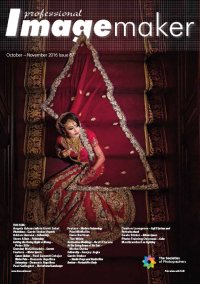articles/Lighting/cwl-page2
Creating With Light - part 2 of 1 2
by Dave Montizambert Published 01/10/2016
Digital photography has made the process so much easier; now that you can instantly see the image on the back of your camera many don’t bother to meter, and that works but only to a point. For really critical work you can’t really judge the capture from that tiny preview. Plus if you shoot Raw as do I, the preview on the back of the camera is a jpeg version of the image that the camera created without any or very little input from you as to how you would like that image processed. The environment you are in affects your vision and so affects how the exposure, range of contrast, and colour appear to you, for example, the preview outside on a sunny day will look darker to you than it will indoors. Now if you meter the scene you will know exactly how the exposure and range of contrast sit and when you look at the camera’s LCD screen you will know how much that preview is skewed.
For me the preview is used for checking composition and the relationship or balance of the lighting ratios I created. This preview is way better than the aforementioned Polaroid method, but is nowhere as good as shooting tethered. So, 99% of my shoots are shot tethered. I set up a TetherTools tray and assembly right next to my camera and place my profiled MacBook Pro laptop on it - see Image 001 of a typical on-location tethered set-up. Now I can shoot my images straight into Lightroom, zoom in to check critical details and use the densitometer to check out flesh tones, range of contrast, etc. Also the laptop screen gives me a way bigger image than a camera LCD to present to the art director/designer/client for discussion. But, keep in mind that even a profiled monitor can’t be fully trusted - it isn’t the be-alland-end-all for the final say, especially a laptop screen. But getting used to working with the densitometer and marrying what you read with it to what you see on screen will get you there.
So in my work, I almost always shoot tethered and I always meter. Metering is faster than trial and error chimping - running back and forth from the camera screen to the lights is way more work than taking dead accurate meter readings, adjusting lights to these readings, then taking a test preview shot at the end to see the overall balance. And finally to really make sure I killed it, before the image ships out, I usually test-print it on a well-profiled higher-end inkjet printer - an image too heavy in the shadow end can look fine on screen but can disappoint in print and disappointment is, at the very least, so disappointing, and in my industry disappointment is so very expensive!
Please Note:
There is more than one page for this Article.
You are currently on page 2 Contact Dave Montizambert
1st Published 01/10/2016
last update 09/12/2022 14:53:02
More Lighting Articles
There are 11 days to get ready for The Society of Photographers Convention and Trade Show at The Novotel London West, Hammersmith ...
which starts on Wednesday 14th January 2026





